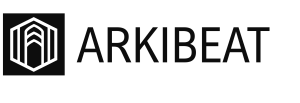1. Customer Segments
A while back, I was asked to help one of my friends with their business. They were just starting out and had big aspirations. I remember sitting down with them and my first question was – “Who is your target market?” Imagine my horror when I heard “everyone.“
This is one of the first mistakes that one could make – not clearly articulating the market or customer segment that you’re going after. Whatever your situation, whether you’re starting a new business or you are a leader of a department within an organization, a deep understanding of your market is vitally important. I’ve even gone so far as to recommend to my mentees to create a target segment as they develop their personal brand. Topic for another entry.
So, what is segmentation?
Segmentation at its core is quite straightforward and yet fundamental to any business model. Think about your market and the characteristics of your market. Now, think about your unique value proposition – your product or service offering.
- Is there a group in your target population that might readily adopt what you’re selling? What are characteristics and attributes of that target population? Can you break down your target market by Geography, By Income, By Communities?
- Now, think about your service model. What will it take to improve conversions? What will it take to keep your customers engaged for any cross-sell and up-sell opportunities? Can you breakdown your customer segments further – maybe by high value or impact?
As you further develop and map your target populations, you being to define some strategies and approaches to achieve market penetrations and reach.
Why is it important?
Segmentation helps you focus your business on what’s important, so your resources and time are allocate and deployed on achieving high-value. Anytime you’re starting out a new business or looking to re-invent an existing business, budgets and resources are always tight. Segmentation help you eliminate waste and streamline your efforts for maximum impact.
How do you start with segmentation?
Segmentation doesn’t have to be a overtly complex and highly scientific process to begin with, although some rigor and experience is highly recommend. You could start out with the basics:
- Geography – State, County, Area,etc.
- Demographics
- Age – Millennials, 18-35 year old, etc.
- Income – < $35K, $70K to $250K
- Behavior – people who used a certain product, people who play golf, etc.
- Communities – Communities of interest, culture, race.
- Combination – People who play golf between the ages of 18-35 who have incomes between $70K to $250K
Look at past sales history based on these categories. Is there a group that stands out? is there hypothesis that you can make about your products and services. Will it appeal a younger audience? Will it appeal to an academic community? Take an educated guess and look to see if the numbers back up your hypothesis.
Don’t Over Segment
One word of caution as you’re segmenting your customers. It is very easy to segment your market down to a level where you just have way too many segments and that it becomes cumbersome to manage. I would recommend starting small with a handful of segments based on your capacity to execute and build from there.
There are more sophisticated statistical and qualitative techniques for segmentation, but I would recommend starting small, but a cadence and continually improve.
Continuous Improvement
I should say segmentation is not a one and done activity. People and market change. Your value proposition changes. Reevaluation customer segmentation in lieu of new product launches or business performance is a mandate.

